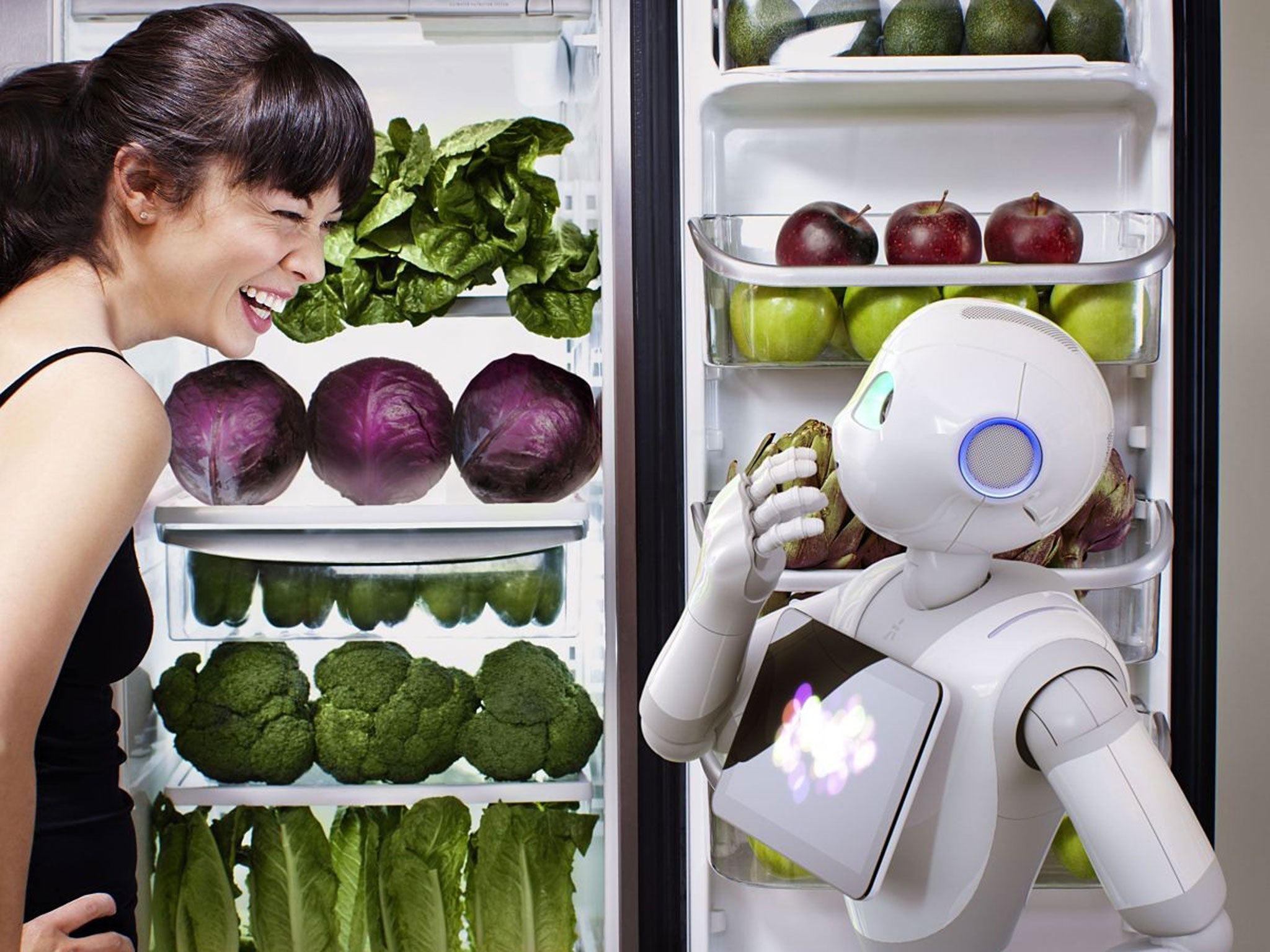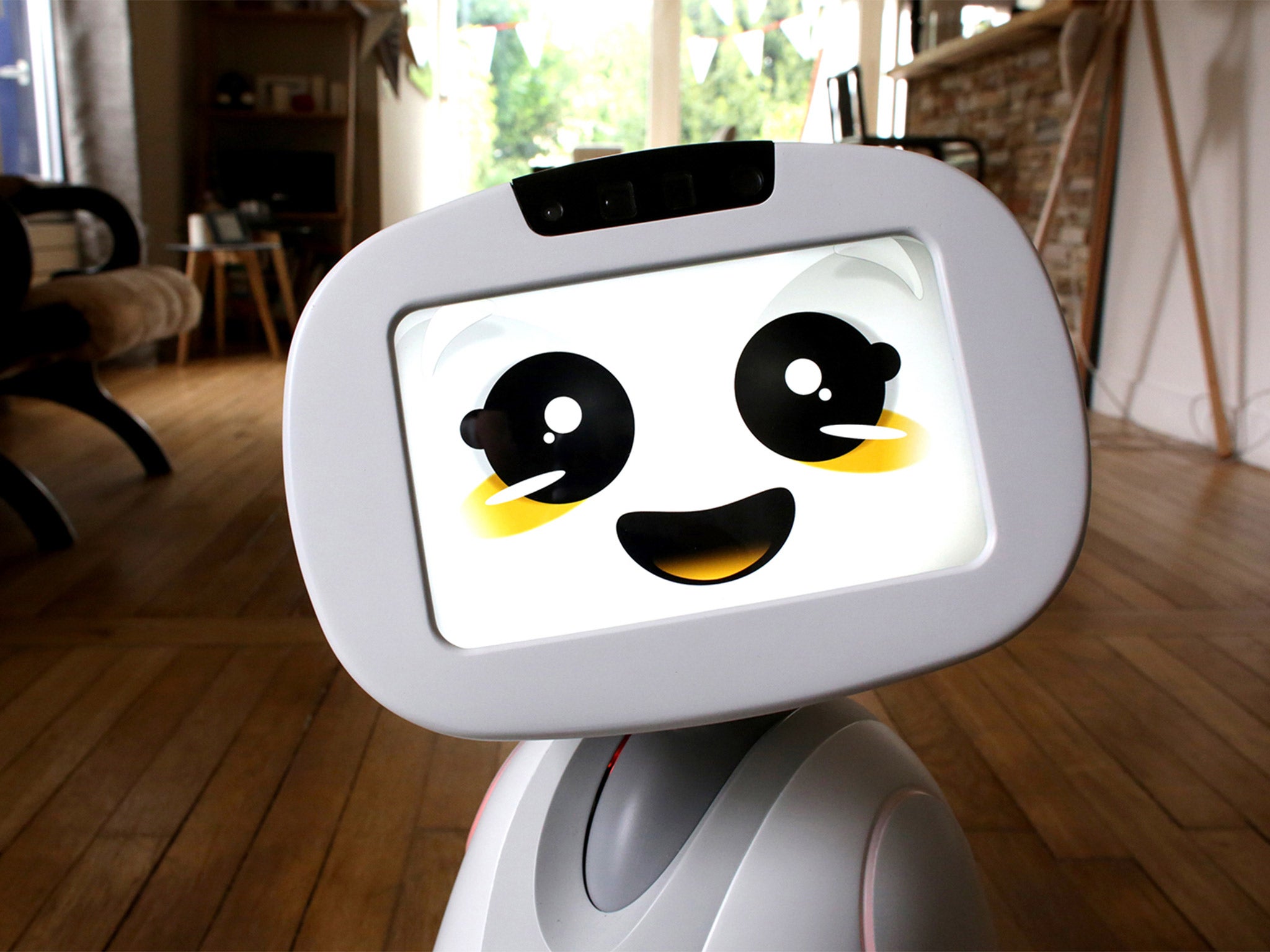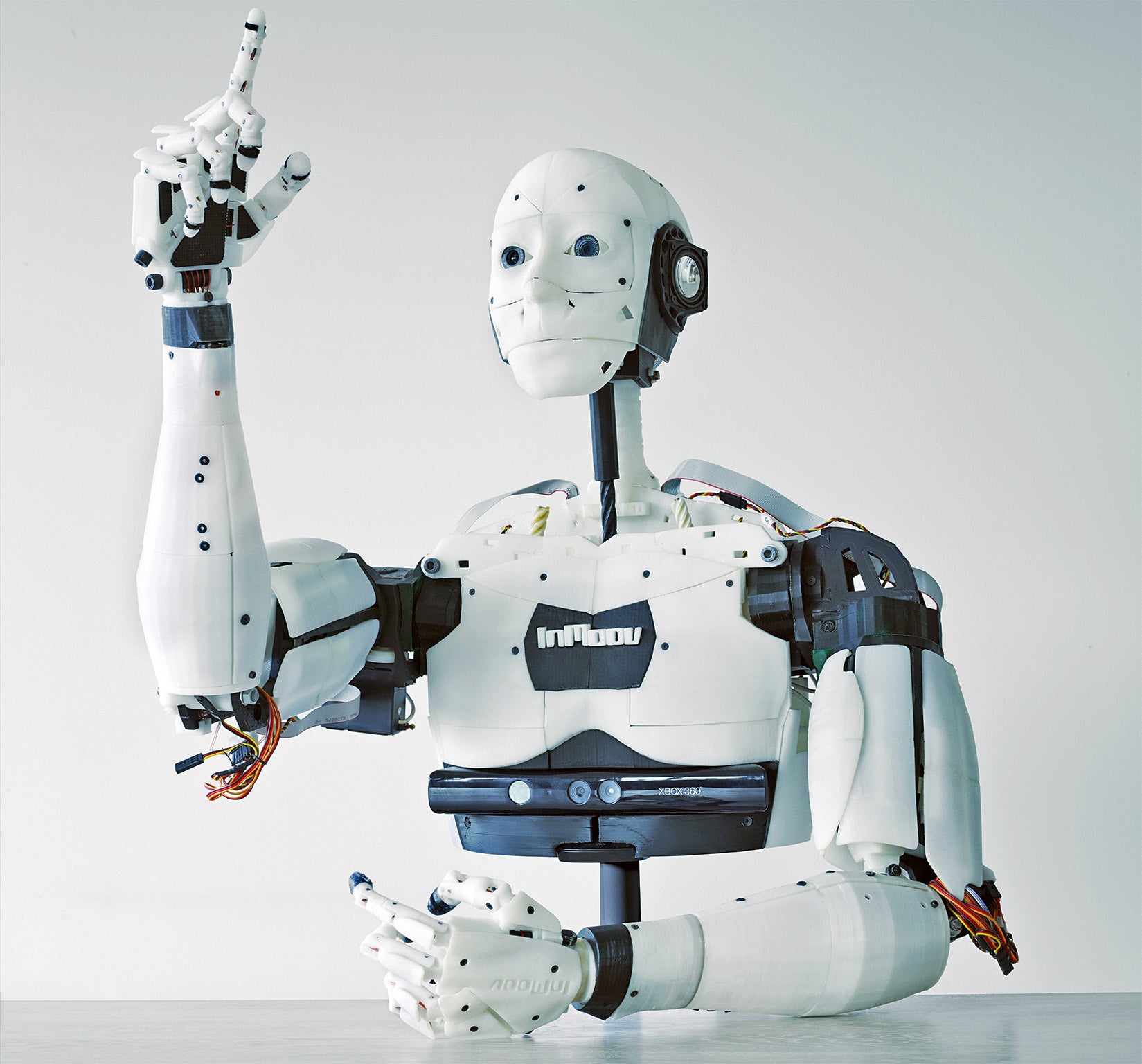Social robots such as Pepper can help with household chores - but at what cost to privacy?
Japanese consumers are snapping up the humanoid-looking robots

Your support helps us to tell the story
This election is still a dead heat, according to most polls. In a fight with such wafer-thin margins, we need reporters on the ground talking to the people Trump and Harris are courting. Your support allows us to keep sending journalists to the story.
The Independent is trusted by 27 million Americans from across the entire political spectrum every month. Unlike many other quality news outlets, we choose not to lock you out of our reporting and analysis with paywalls. But quality journalism must still be paid for.
Help us keep bring these critical stories to light. Your support makes all the difference.
When most people think of robots, they either think of hulking Terminators or the dumb industrial varieties taking part in a future robot uprising. But there's another class of robot that's also gaining traction – social robots that cost less than £650 and are designed for the home. They are more WALL-E than Terminator, and are meant to be personal companions and even "one of the family".
For all the stories about the perils of artificial intelligence, these machines are strangely disarming. First of all, some of them – such as the new Buddy companion robot from French firm Blue Frog Robotics – look like they've had a cartoon smiley face painted on them. Buddy whisks around on wheels and casters while JIBO, another social robot option, swivels harmlessly on your desk or floor. They don't have arms or legs and are supposed to read stories to your children or snap photographs of the family. And they aren't much more intelligent than the apps on your smartphone or smartwatch, so you don't have to worry about the perils of superintelligence.
The main selling point of these robots is that they can perform many of the tasks that people typically outsource to their different digital devices. Think of the social robot as one part iPhone, one part Dropcam, and one part Nest, all connected by a tablet device that recognises faces and voices. In the case of Buddy, the tablet is actually the "face" of the robot.
What's really genius about these bots is not the technology inside them – it's the idea that these social robots are destined to become part of the "connected home". Just a few years ago, the idea of the "Internet of Things" for the home still sounded fantastic and futuristic – now it doesn't strike people as so absurd that smoke alarms and thermostats are hooked up to the internet. So, if we're busy hooking up our home to the internet, why not a robot as well?
Plus, there's the price point to consider. For £300 you can buy a tablet or smartphone. For a few hundred pounds more you can get a social robot for the home. For example, the Buddy will retail for £415 (but comes with a special price of £350 if you buy it on Indiegogo). The JIBO Home Edition retails for £479 on pre-order.
Of course, there's room to be sceptical about these social robots for the home. For one, just consider the privacy aspects of having robots wandering around, snapping photos of you and your loved ones, and then – potentially – having those photos shared with the wrong people on the internet. Or, consider the prospect of having a nefarious outsider hacking into your home and downloading personal information from your home robots.

There's also the largely dystopian idea that these social bots may not be so "social" after all. In fact, they may turn out to be anti-social. Once they infiltrate the home, they might start snooping on us or they might start interrogating us. They might not be equipped to deal with the full range of our human emotions or foibles.
And finally, there's the very real notion that these bots will never live up to their initial expectations. Take the example of JIBO, which became one of the most popular Indiegogo projects in summer 2014, then raised $25m (£16m) from investors in January, and then went back to Indiegogo again this summer to raise $3.7m from the crowd. That's nearly $30m for a robot that can't move, doesn't have arms or legs or even a real face, and can't do much more than what you'd get with the new Amazon Echo or the latest smartphone.
However, the one suggestion that social robots might have a future comes from Japan, which saw the radically successful launch of Pepper – the world's first humanoid robot designed to live with humans – earlier this summer. In less than one minute, Aldebaran Robotics and SoftBank sold out all 1,000 Pepper humanoid bots. And now both companies are partnering with Alibaba and Foxconn to bring these humanoid-looking robots to other locations, such as shops and hotels.
Social robots such as Pepper, Buddy or JIBO aren't true artificial intelligence – but they could pave the way for some kind of hybrid machine that interacts with humans and provides a sort of ambient intelligence everywhere we go. They would also mark a step beyond just app assistants for the smartphone by giving an anthropomorphic shape to that intelligence.
The big question, of course, is whether these social robots are just a gimmick (ie a new "pet rock" for techno early adopters who grew up with R2-D2), or whether they can add lasting value by becoming companions for the elderly or trusted helpers for childcare. If so, it's possible to imagine a scenario in which a growing number of households eventually has a home robot assistant of some kind.
A version of the article appeared in the 'Washington Post'
Humanoid kindness: the robots making life better
The boundaries of what is human and what is robotic are perhaps pushed most to their extreme when designers are faced with human suffering.
From taking bed-bound children on a virtual trip to the zoo, to creating a 3D-printed prosthetic arm for a worker whose hands were severed in an oil rig accident, to getting robots to developing nations via 3D printers – one company is tackling them all. So it is perhaps apt that London-based technology platform Wevolver has called its new project "Robots for Good".
The lightbulb moment for co-founder Richard Hulskes came in New York, when he saw the virtual-reality eyepiece "oculus rift" connected to a robot – and thought of sick children being able to experience the outdoors through the eyes of such a robot. Several conversations with Great Ormond Street Hospital later, and the company is six months away from assembling the final design – a robot's torso on a Segway wheel, which will enable the viewer to whizz around happily. Already, the prototype has taken a child in a hospital bed to London Zoo, moving its head as the child moves theirs, and opening its mouth to speak their words.

Hulskes says there will always be "doom and gloom" about robots (The Terminator has a lot to answer for), but many welcome them. "One lady said to me she would love to meet her mother in her residential home this way. Different people see different things in this."
The real clincher for Hulskes, however, is that experts across the internet are collaborating to make cutting-edge designs public for free. "The thing that makes this project special is that it's open-source. Usually, technology like this could be up to £100,000, and with this it's £60," he explains. "There's a huge community out there, giving back what they've learnt."
And Wevolver may collaborate with London-based group Tech for Trade to turn waste electronic equipment into 3D printers to bring the designs to Africa. "We connect people. This is not created by us, but it's happening because of us," Hulskes says. "If we weren't doing this now, it wouldn't happen for years."
Jess Staufenberg
Join our commenting forum
Join thought-provoking conversations, follow other Independent readers and see their replies
Comments